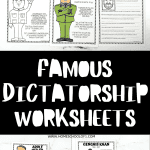Famous Dictatorship Worksheets
Understanding the history and impact of notable dictators provides valuable lessons about leadership, governance, and the effects of power on societies.
These famous dictatorship worksheets serve as excellent resources for upper elementary to middle school students, offering insights into the lives and regimes of these figures.
These dictatorship printables are perfect additions to any homeschool history curriculum, providing structured and engaging materials for learning.
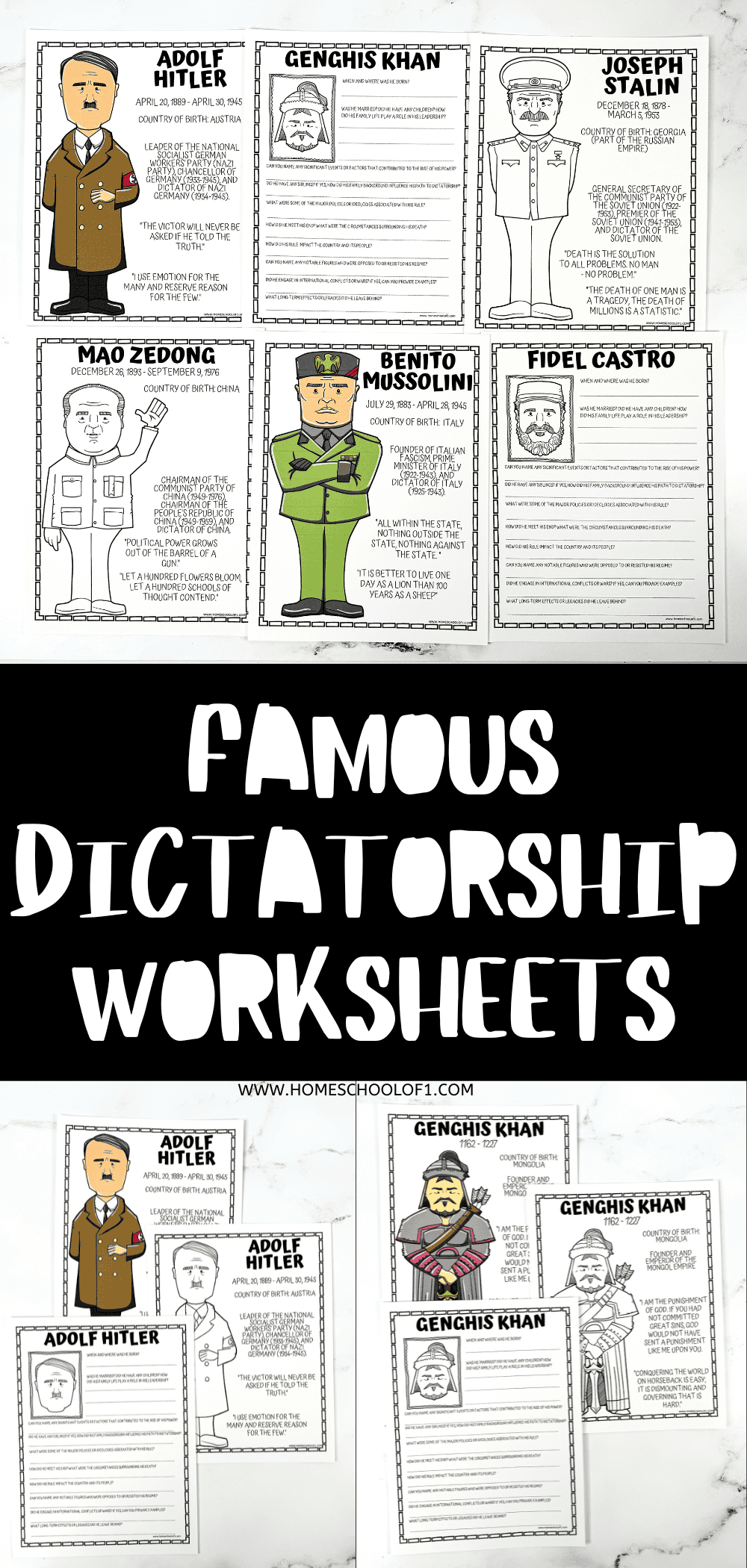
**This post may contain affiliate links. As an Amazon Associate and a participant in other affiliate programs, I earn a commission on qualifying purchases.**
The study of history often includes examining the lives of influential leaders, both revered and reviled.
Dictatorship printables
The provided homeschool printables on Genghis Khan, Adolf Hitler, Benito Mussolini, Mao Zedong, Joseph Stalin, and Fidel Castro are designed to offer students a comprehensive view of these dictators’ lives, ideologies, and impacts.
These resources highlight the authoritarian rule, totalitarian regimes, and political philosophies that shaped the 20th century.
What’s included?
Each printable contains a summary of the dictator’s life, key quotes, and a series of questions aimed at encouraging critical thinking and deeper analysis. Here’s a detailed look at the contents:
For each dictator, the printables include both a colored poster and a black-and-white version that students can color in themselves. These posters feature a picture of the dictator, their birth and death dates, their country of birth, what they were famous for, and a notable quote. This dual format serves multiple educational purposes:
The colored posters help visually engage students, making the historical figures more memorable and helping to contextualize the information presented.
The black-and-white posters allow students to interact with the material in a creative way. Coloring these posters can help reinforce learning and provide a kinesthetic activity that makes history lessons more engaging.
Research worksheet
Each printable also includes a one-page research worksheet for each dictator, prompting students to find information about their early life, significant events, rise to power, family background, policies, international conflicts, and legacy. The questions to find answers to are:
When and where was he born?
Can you name any significant events or factors that contributed to the rise of his power?
Did he have any siblings? If yes, how did his family background influence his path to dictatorship?
Was he married? Did he have any children? How did his family life play a role in his leadership?
What were some of the major policies or ideologies associated with his rule?
How did he meet his end? What were the circumstances surrounding his death?
How did his rule impact the country and its people?
Can you name any notable figures who were opposed to or resisted his regime?
Did he engage in international conflicts or wars? If yes, can you provide examples?
What long-term effects or legacies did he leave behind?
These will make a great addition to your homeschool social studies curriculum.
Mao Zedong
Mao Zedong was a communist revolutionary who established the People’s Republic of China in 1949 and led the Communist Party of China. His policies, like the Great Leap Forward and the Cultural Revolution, had significant impacts on China’s society and economy.
- December 26, 1893 – September 9, 1976
- China
- “Political power grows out of the barrel of a gun.”
Download our Mao Zedong worksheets.
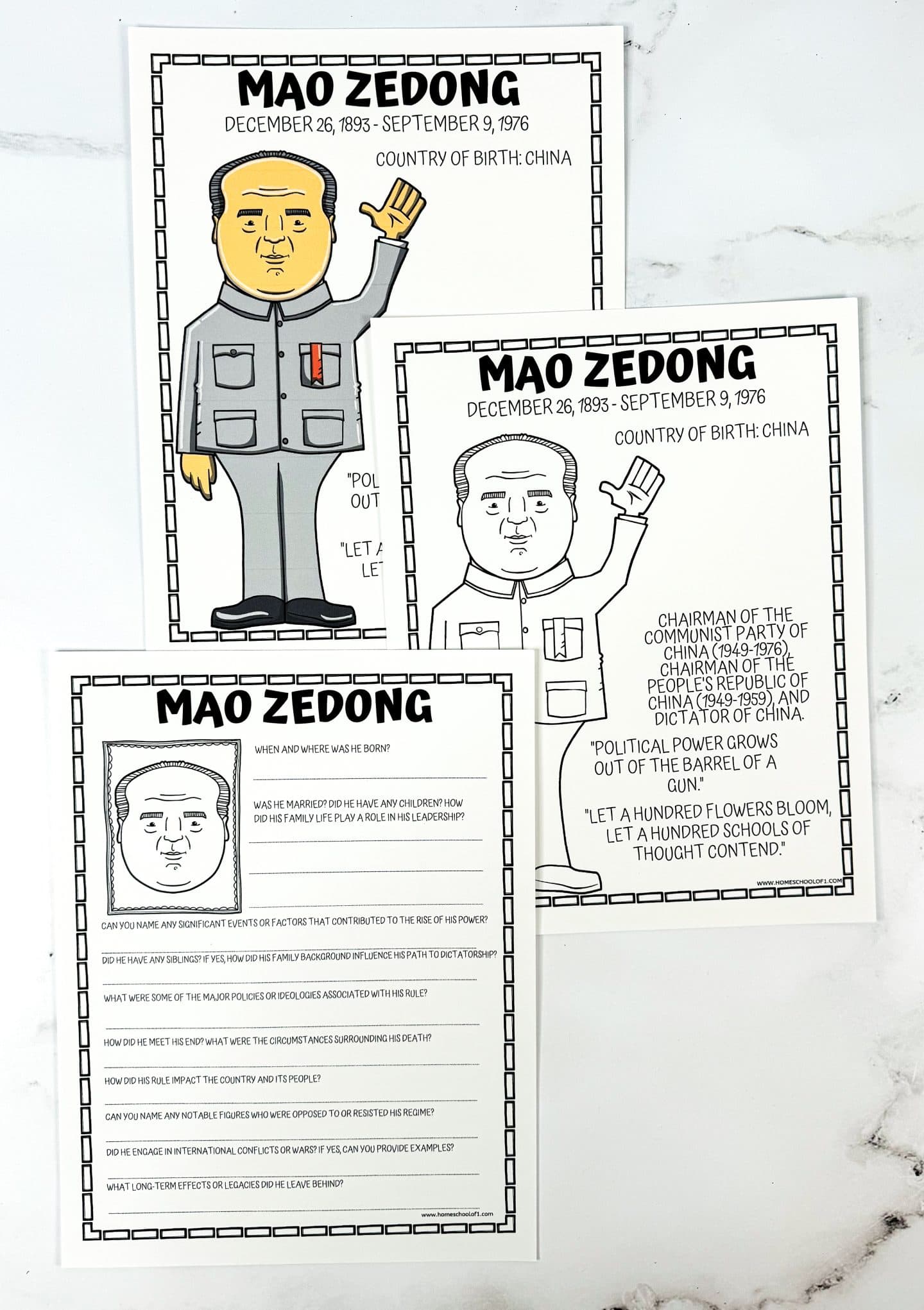
Adolf Hitler
Adolf Hitler was the leader of the Nazi Party who rose to power in Germany and led the country through World War II. His regime was marked by authoritarian control, propaganda, and the horrific genocide known as the Holocaust.
- April 20, 1889 – April 30, 1945
- Germany
- “The victor will never be asked if he told the truth.”
Download our Adolf Hitler worksheets.
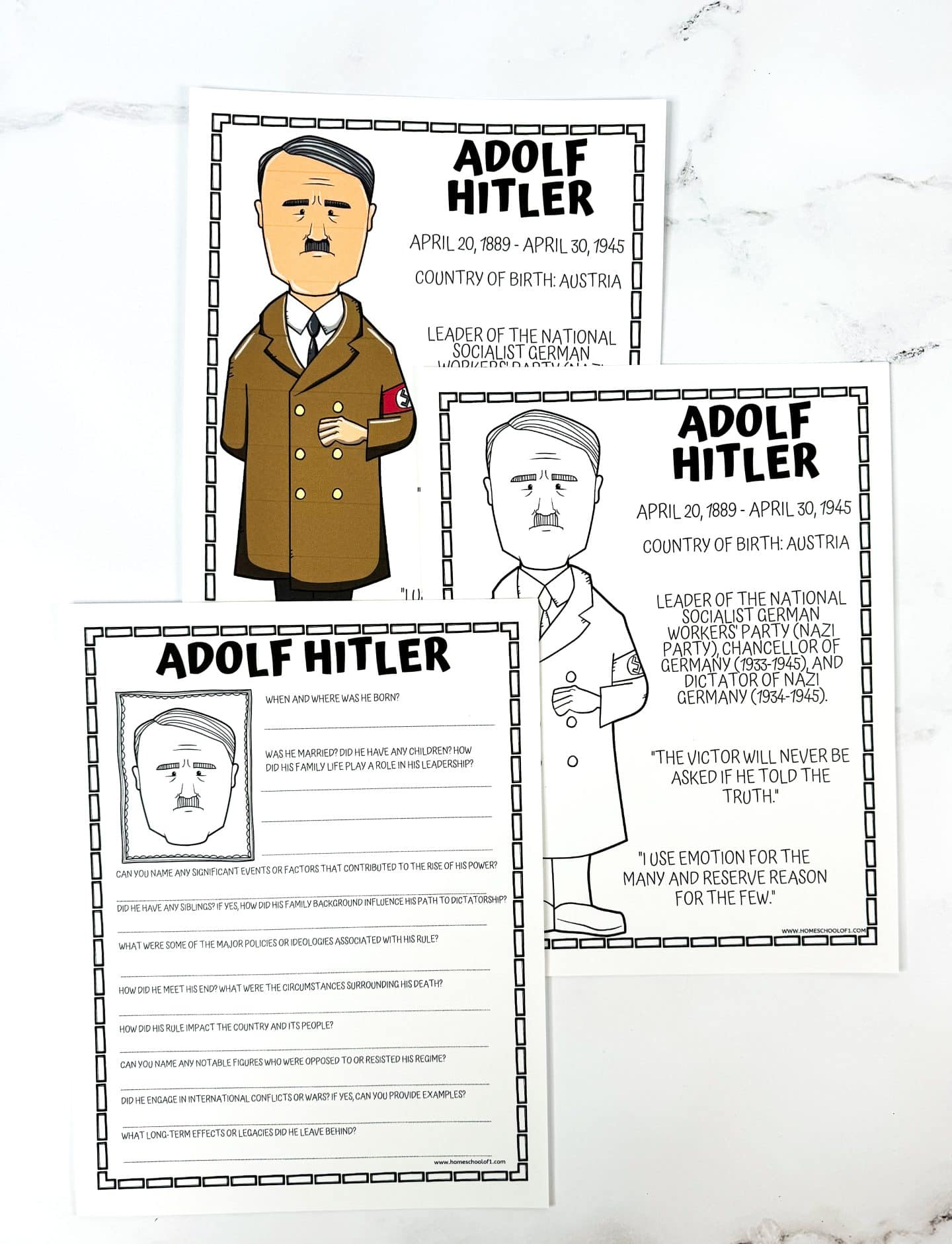
Joseph Stalin
Joseph Stalin was the General Secretary of the Communist Party of the Soviet Union and a totalitarian dictator. His rule was characterized by widespread repression, purges, and the establishment of a command economy.
- December 18, 1878 – March 5, 1953
- Soviet Union
- “The death of one man is a tragedy, the death of millions is a statistic.”
Download our Joseph Stalin worksheets.
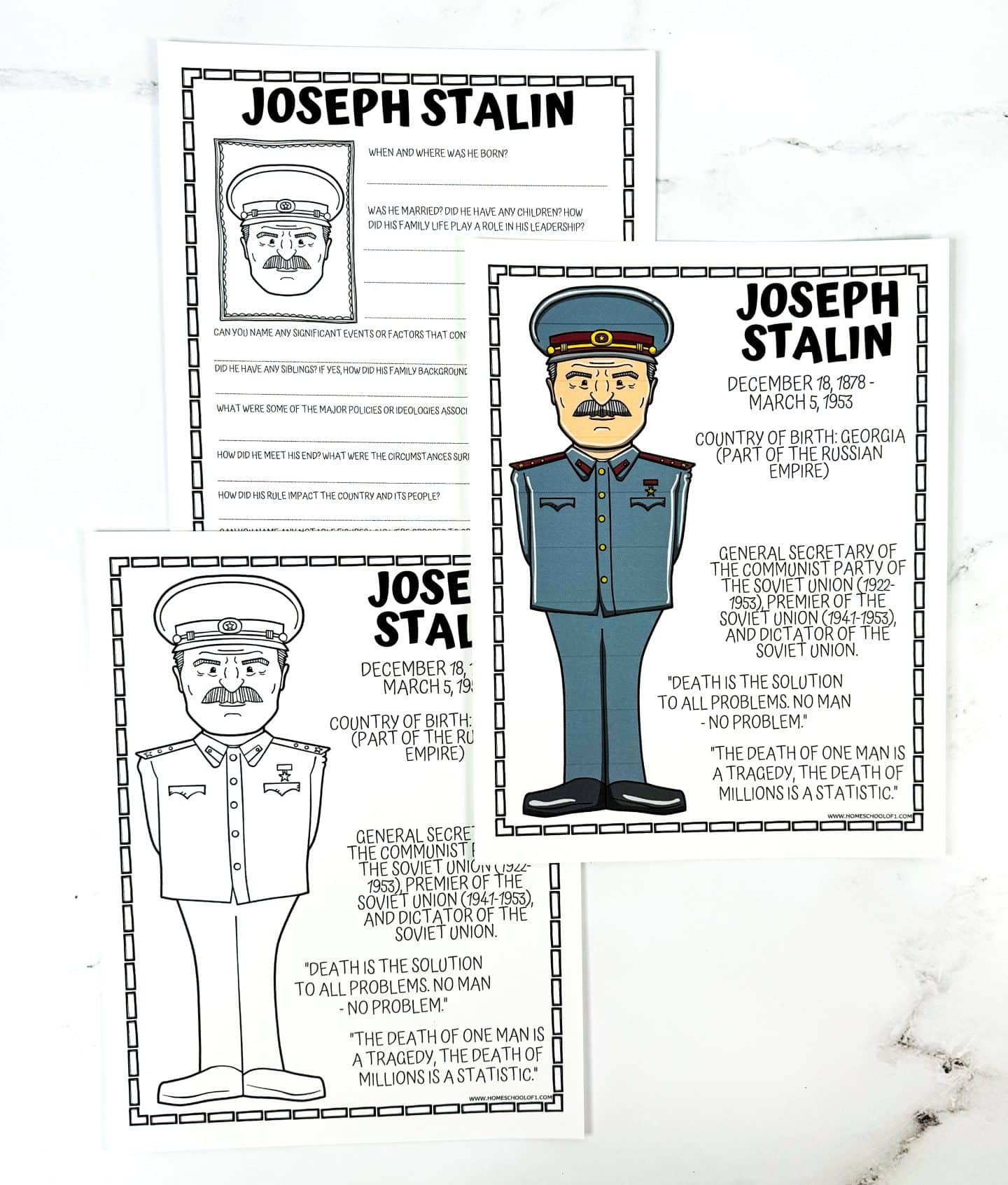
Genghis Khan
Genghis Khan was the founder of the Mongol Empire, the largest contiguous empire in history. His military tactics and leadership led to vast territorial expansions and significant impacts on the cultures of the conquered regions.
- 1162 – 1227
- Mongolia
- “Conquering the world on horseback is easy; it is dismounting and governing that is hard.”
Download our Genghis Khan worksheets.
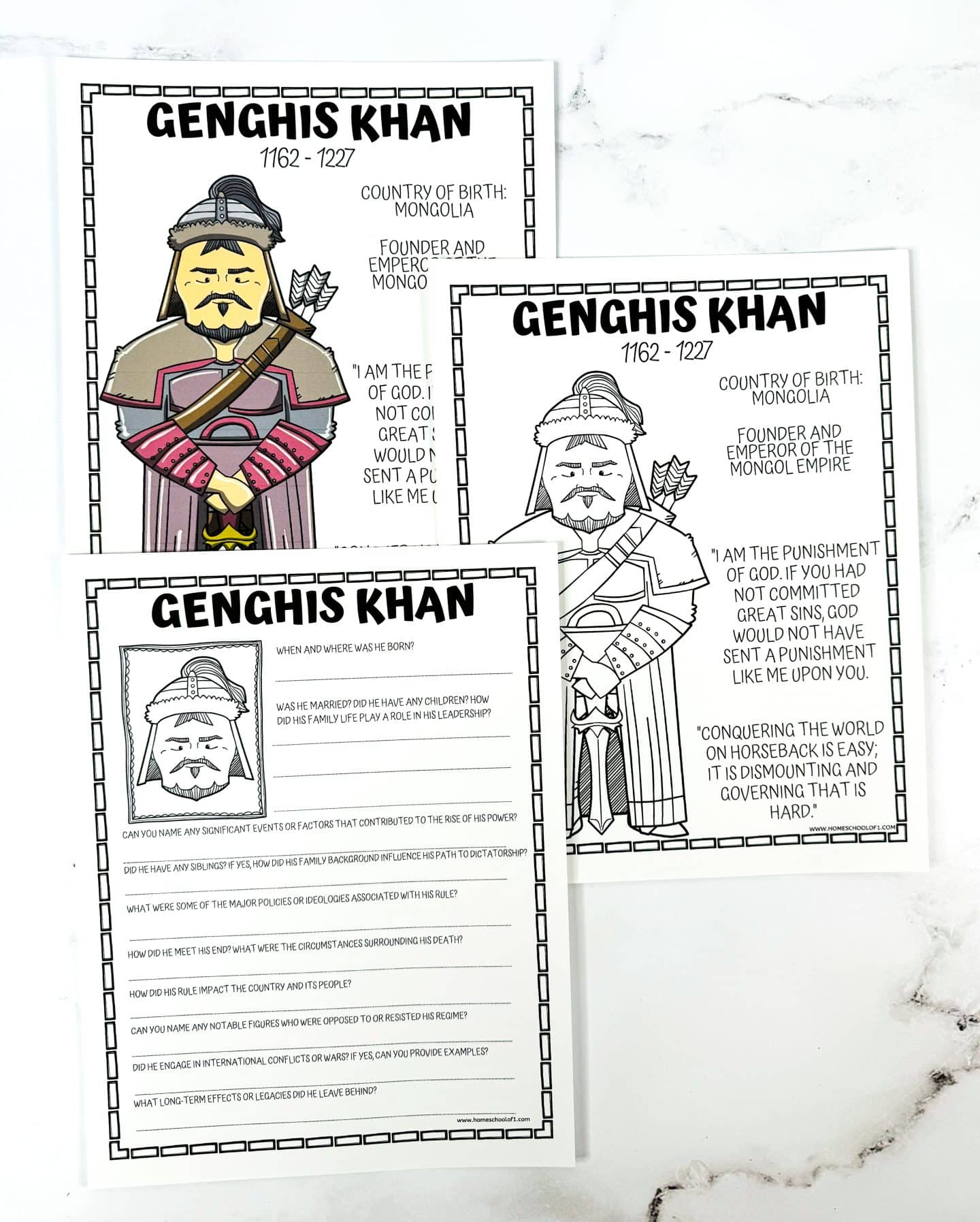
Benito Mussolini
Benito Mussolini was the founder of Italian Fascism and ruled as the Prime Minister and dictator of Italy. His policies led Italy into World War II as an ally of Nazi Germany.
- July 29, 1883 – April 28, 1945
- Italy
- “It is better to live one day as a lion than 100 years as a sheep.”
Download our Benito Mussolini worksheets.
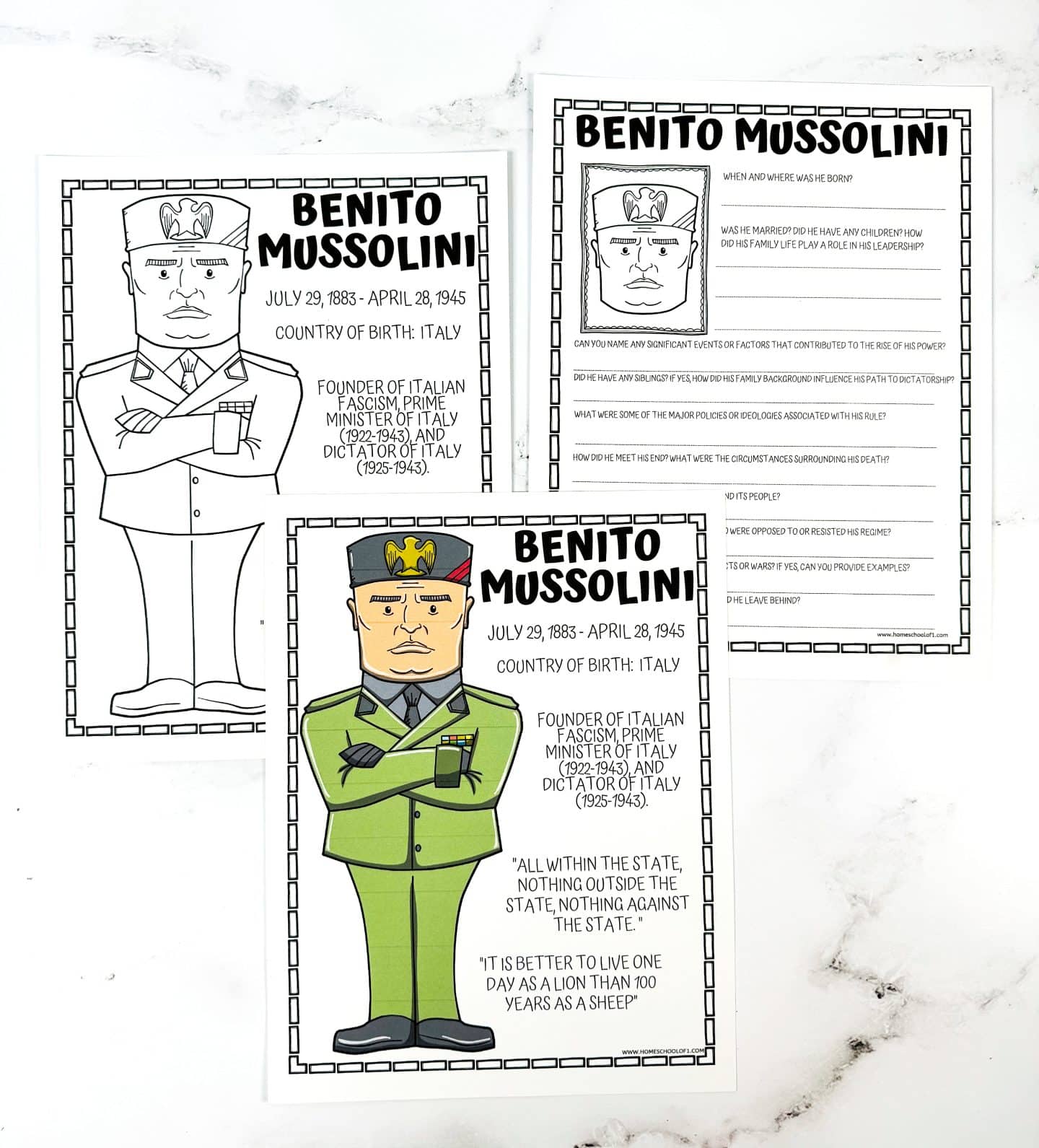
Learn more about the continent of Europe with our free Europe geography worksheets.
Fidel Castro
Fidel Castro was the leader of the Cuban Revolution and established a communist government in Cuba. His long rule saw significant socialist reforms and a close alliance with the Soviet Union, especially during the Cold War.
- August 13, 1926 – November 25, 2016
- Cuba
- “I began revolution with 82 men. If I had to do it again, I would do it with 10 or 15 and absolute faith.”
Download our Fidel Castro worksheets.
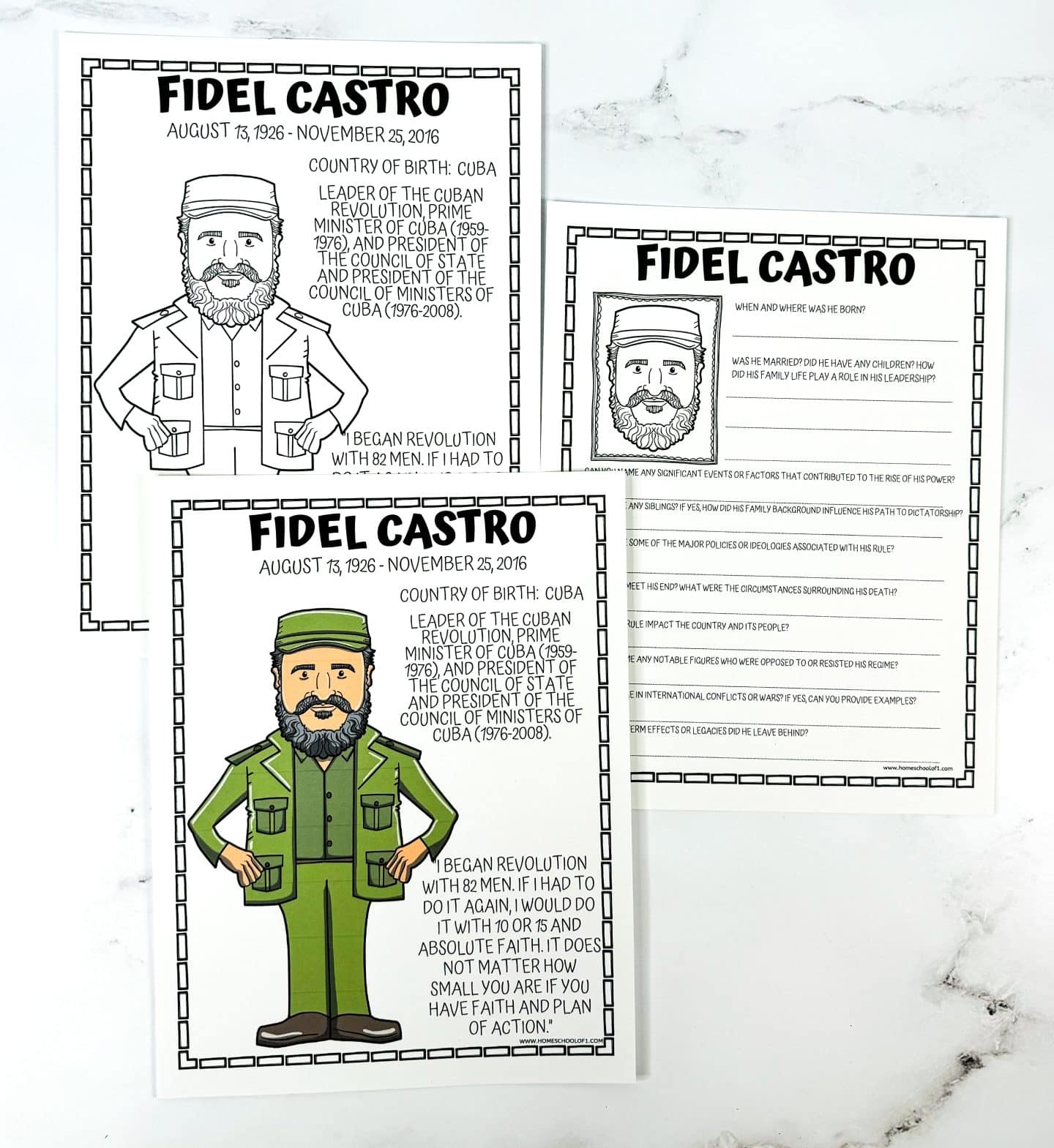
Educational benefits
These printables offer numerous educational benefits, including:
The questions included in each printable are designed to provoke thought and discussion, helping students develop critical thinking skills by analyzing the causes and effects of each dictator’s actions and policies.
Students gain a detailed understanding of significant historical events and figures, which is essential for grasping the complexities of world history and politics.
Learning about the impacts of these dictators’ regimes on people and societies can foster empathy and ethical reflection, encouraging students to think about the moral implications of leadership and governance.
The printables encourage students to conduct further research to answer the questions comprehensively, thus honing their research and analytical skills.
How to use these printables effectively
To maximize the educational value of these resources, teachers can:
- Integrate them into history lessons: Use the printables as part of a larger unit on world history or specific time periods.
- Facilitate group discussions: Encourage students to discuss their answers and perspectives in groups, promoting collaborative learning.
- Assign research projects: Have students use the printables as a starting point for more extensive research projects or presentations.
- Encourage critical essays: Assign essays that require students to critically analyze the information provided and form their own opinions about the dictators’ impacts.
Download the famous dictatorship printables
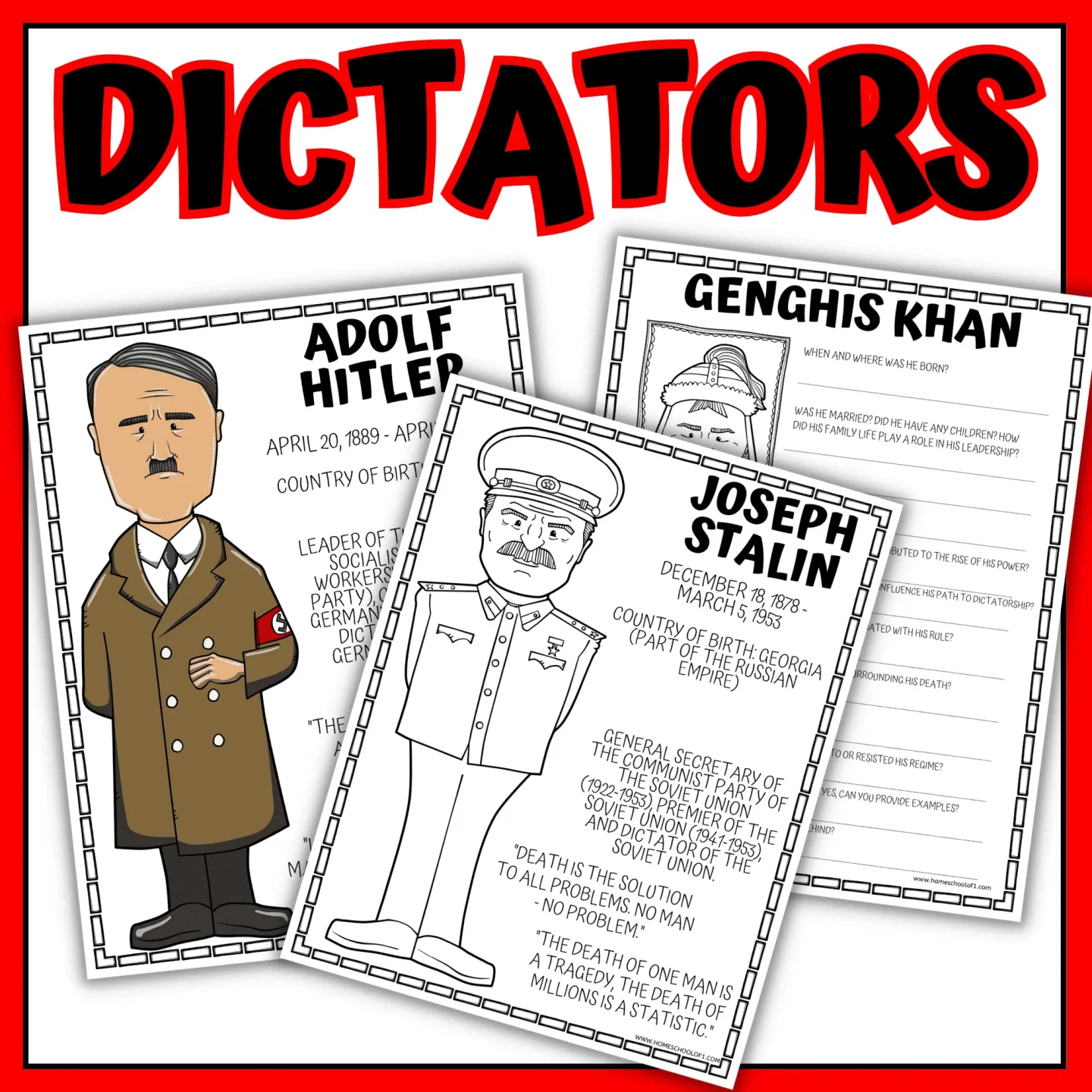
LEARN ABOUT ALL OF THE FAMOUS DICTATORS HERE.
Last Updated on 23 October 2025 by Clare Brown

